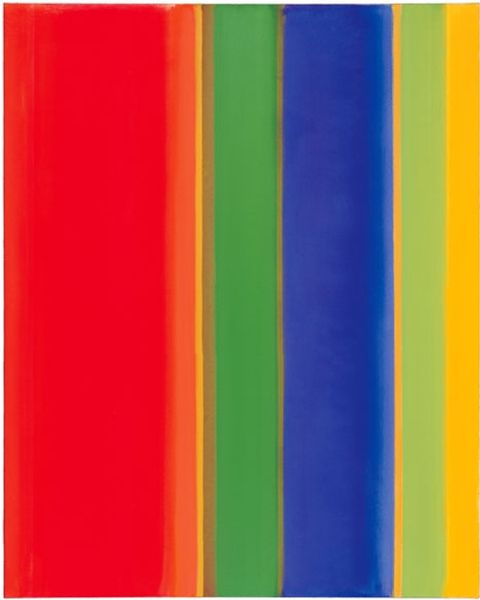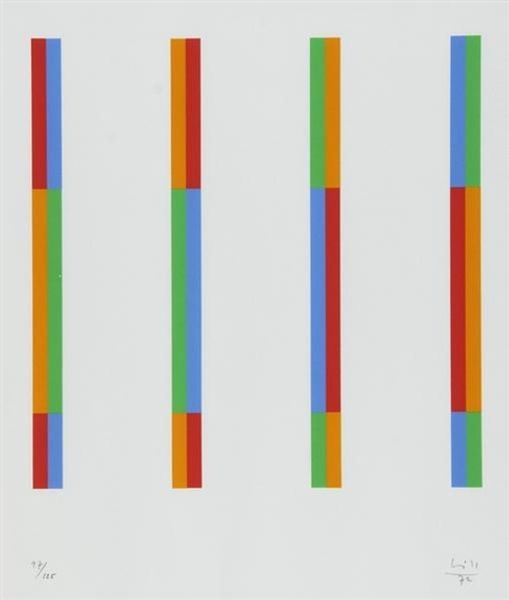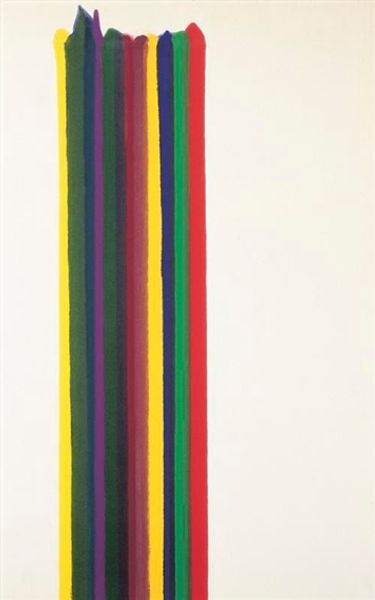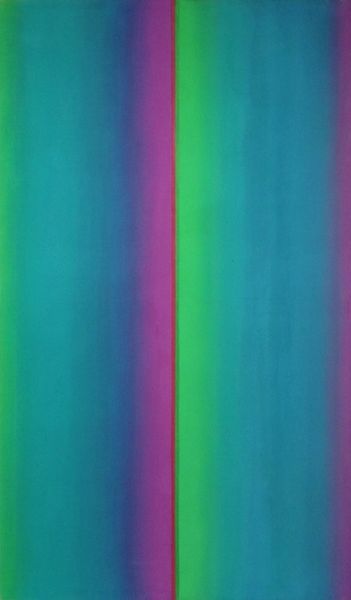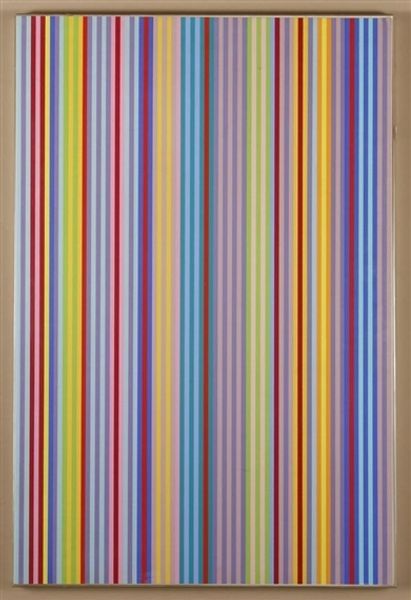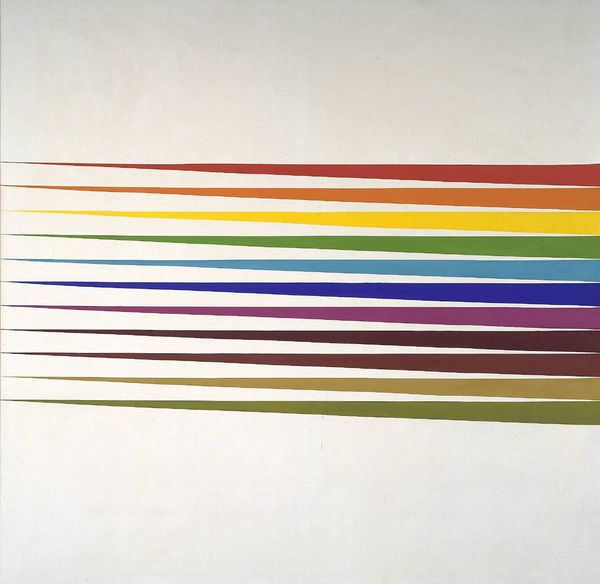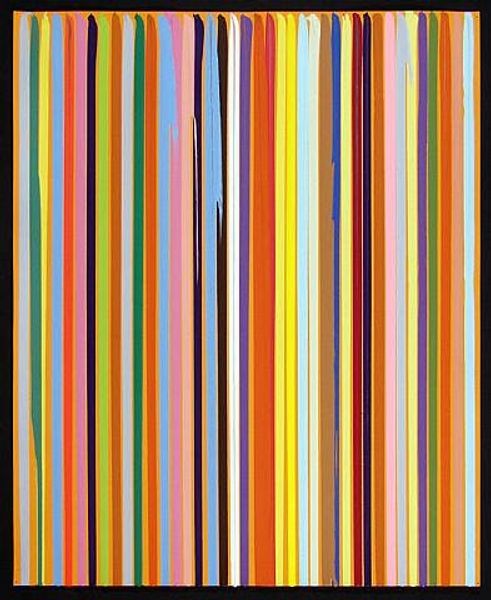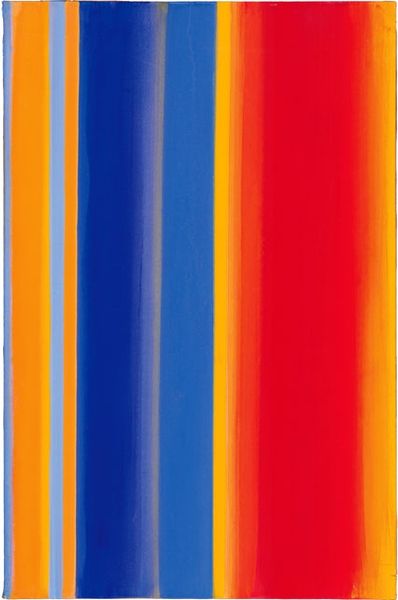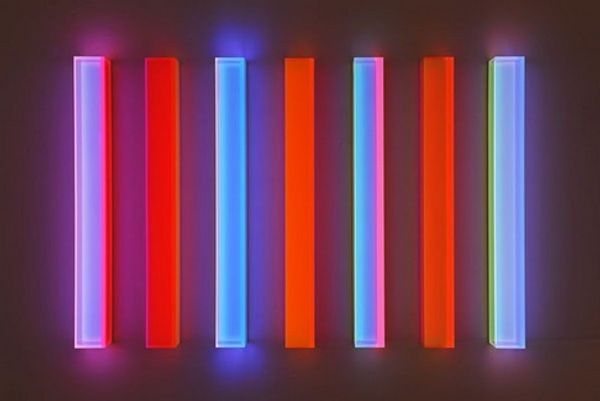
painting, acrylic-paint
#
painting
#
colour-field-painting
#
acrylic-paint
#
geometric pattern
#
abstract pattern
#
minimal pattern
#
organic pattern
#
geometric
#
geometric-abstraction
#
vertical pattern
#
abstraction
#
line
#
pattern repetition
Copyright: Michel Carrade,Fair Use
Curator: Well, hello there. I find this untitled piece by Michel Carrade so mesmerizing. The way these fields of vibrant acrylic paint just sort of shimmer and vibrate next to each other is such a mood, isn't it? Editor: Absolutely. It’s interesting how the bands of color feel like territorial claims. The solid red asserting itself against the cooler blues and greens, but it all remains balanced somehow. There’s an undercurrent of tension, a potential for conflict, maybe even something more systemic relating to the construction of dominance. Curator: Ooh, “territorial claims”! I love that! It makes me think about landscapes, but like, inner landscapes, you know? Places inside ourselves that are always shifting and reforming. Editor: Building on that metaphor of inner landscapes, these vertical stripes—particularly the solitary red line near the blue—call attention to borders, both visible and invisible. How the individual navigates or is barred from movement based on predetermined categories… Curator: It's interesting you use the term "movement", because while these fields of colour remain in their clearly allocated spaces, there is this definite sense of energy radiating between them. I see that lone red stripe you mention and I want to know why. Why does it break up the harmony on the blue side, drawing attention? What is it for? Editor: Right! I think we are witnessing, with that single red stripe, an interruption of the accepted order. And if we extend our metaphorical lens outwards, who is granted the freedom to simply *be* without constant scrutiny or limitation? In colour theory, too, that jolt of red does all sorts of intriguing things when juxtaposed against those cooler tones… Curator: See, colour theory makes me think about taste, and aesthetics and, oh gosh, who decides what’s beautiful anyway? I just respond on an emotional level. When I look at it, I see joy. Editor: Well, I find myself reflecting on the socio-political subtexts that abstraction so often conceals – or, perhaps, is trying to illuminate through oblique gestures. Regardless, thinking about who has the agency to express joy freely and safely is really what strikes me here. Curator: That’s so true. Well, I will look at the work with different eyes next time now, and ask myself: Whose joy is this really? Editor: Indeed. I find this exchange enriches how I relate to and understand Carrade’s "Untitled." The simple presence of color holds immense depths when explored thoughtfully.
Comments
No comments
Be the first to comment and join the conversation on the ultimate creative platform.
